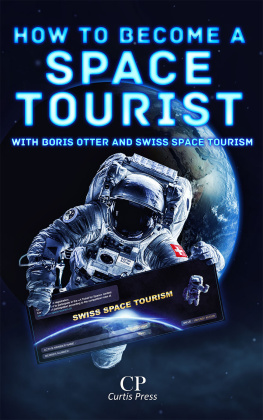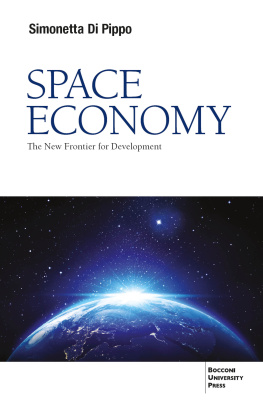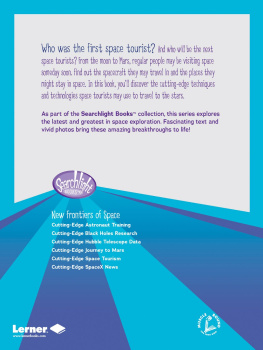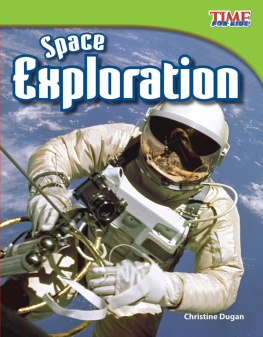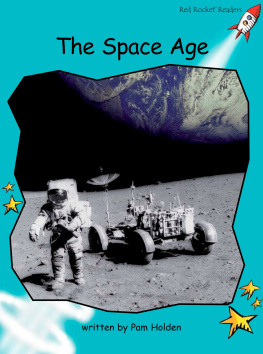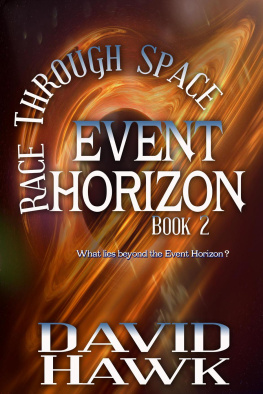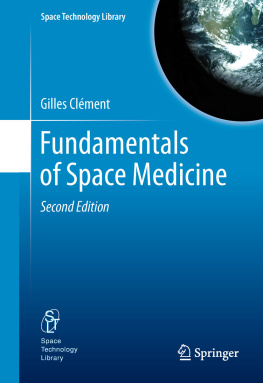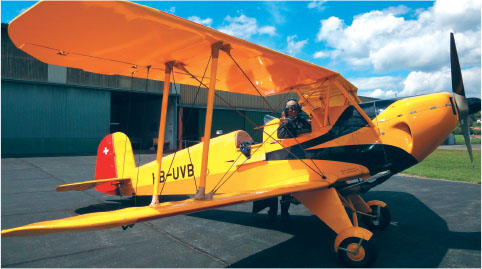How to Become a Space Tourist
How to Become a Space Tourist
with Boris Otter and Swiss Space Tourism
Boris Otter
ISBN (hbk) 978-0-9934002-7-8
ISBN (ebook) 978-0-9934002-8-5
Boris Otter 2019
Published 2019 by Curtis Press
This work is subject to copyright. All rights are reserved, whether the whole or part of the material is concerned, specifically the rights of translation, reprinting, reuse of illustrations, recitation, broadcasting, filmmaking, electronic reproduction of any kind, and electronic storage of any kind. Duplication of this publication or parts thereof is permitted only after permission has been obtained from Curtis Press. The use of general descriptive names, registered names, trademarks, etc. in this publication does not imply, even in the absence of a specific statement, that such names are exempt from the relevant protective laws and regulations and therefore free for general use.
Cover design: JudithSDesigns&Creativity, www.judithsdesign.com
Typeset in Times New Roman by Falcon Oast Graphic Art Ltd, www.falcon.uk.com
Visit Curtis Press at www.curtis-press.com
Contents
Because life is not measured by the breaths we take, but by the moments that take our breath away
Note from the publisher
Boris Otter and Swiss Space Tourism are offering a hitherto unaffordable opportunity to people interested in making the trip of a lifetime into space.
For $100 you can purchase a ticket to space by visiting Swiss Space Tourism at www.swiss-space-tourism.ch or scanning the QR code below.
CHAPTER 1
Boris Otter
Space tourism is the practice of traveling into space for recreational purposes.
INTRODUCTION
My passion for aviation and astronautics started somewhere between 1981 and 1984. I was a young student when I started to follow an optional course on aviation, given every Wednesday, between 11:30 am and 01:00 pm. The teacher was an exSwiss Army Forces pilot, who fought in the Second World War as a commander of military aircraft. He was still an active pilot and worked as a flight instructor at the Geneva aeroclub where I was a student. Later he became my first flight instructor. During the course he taught us aerodynamics, meteorology, aircraft knowledge, navigation, air law, weight and balanced forces, and emergency procedureswell on a basic level that is, since we numbered 1015 students aged between 12 and 14 years. But it was amazingly interesting and his passion made me a great fan of both him and aviation. To keep us all motivated he created a kind of competition between the pupils: two to three years into the course he gave us an exam, questioning what we had learned on the course. The reward was that the winner would become his co-pilot on board a Cessna or Piper aircraft, with him as the pilot in command. Second and third in the competition would take the back seats and enjoy the view!
I was so motivated that I learned almost everything by heart and consequently took first prize. That represented the starting point of it all for meI flew my first aircraft at the age of 12.
One of our trips was to Genevas airport where we all had the chance to spend time on a flight simulatorfor me a dream come true. I distinctly remember setting my watch timer to check how many minutes (and seconds) I had inside the simulator. Even after having spent 3 years at this school, and having moved on to another, I still requested special authorization to be able to join his course again, for a fourth and a fifth year in a rowmy requests were accepted!
In 1992 he became my first ever flight instructor. We made several flights together, but unfortunately I had to continue with a younger instructor as he was getting a little too old to fly.
In the summer of 1987 I flew gliders in France, in Vinon-sur-Verdon, where I was really close to making my first solo flight. However, that milestone was postponed until I took my private pilots license in 1992. In 1995 I was awarded my airplane pilots license. I continued flying and in 1996 passed my aerobatic license in a Cap-10 aircraft.
Continuing with my passion I also passed my helicopter pilot license in a Bell 206 Jet Ranger BIII. However, the company I was training with suddenly closed and I had to restart my training in a Robinson R22 HP Beta II at the Geneva aeroclub, where I completed my license. Later, I returned to fly the Bell Jet Ranger 206 BIII in La Gruyres. I flew helicopters for 5 years (19962001) on a private basis, most of the time with passengers who just paid for the fuel.
Ready for takeoff on an aerobatic flight with the Bcker B 131 Jungmann in 2011.
Wearing the Sokol spacesuit in the cosmonaut changing room.
Copyright, LIllustr, photograph by Blaise Kormann, April 2019.
https://youtu.be/N2d9ahNXVmc
https://youtu.be/SHxrv7cKRO4
https://youtu.be/j0chMWZoNiM
https://youtu.be/z4UyxJrta9U
In 2001 I made a major life decision. I left my full-time job as a professional fireman to start an Integrated Airline Transport Pilot License course run by Crossair Aviation Training in Basel. The course was delivered in English and was supposed to guarantee the position of co-pilot upon completion. In August 2002 I successfully finished everything. However, the world had changed over these 18 months we were in the aftermath of September 11; on October 2, 2001 Swissair was grounded; on November 24, 2001 a Crossair Jumbolino crashed close to Zrich; and in March 2002 Swissair became bankrupt and was in part taken over by Crossair, becoming Swiss International Air Lines. At the beginning of my training we were told that all students would be employed after the formation of Swiss International Air Lines; then we were told it would only be Swiss citizens that would be employed; then it became clear that nobody would be600 pilots from Crossair were made redundant to ensure that Swissair pilots retained their jobsa string of events that ended my career at that time! I kept all my licenses valid until 2005, but then realized that the market for young pilots, with only 500 hours of flight time, was not recruiting. I had no type ratings and no hours on jet engines, so I had to make another major decisionI would never be an airline pilot, I needed to change my career, still in aviation of course, but this time on the ground. At the same time, my wife became pregnant, something that encouraged me to be more realistic.
However, in 2005 I went to Canada to pass my seaplane rating, as I had the chance to fly a Twin Otter with Maldivian Airlines. Unfortunately, government intervention meant that only locals would be recruited, not foreigners. In 2014 I passed my gyrocopter license in Francesimply for pleasure. Then, from April 2016 my new goal became space related, thanks to Star City in Moscow.

